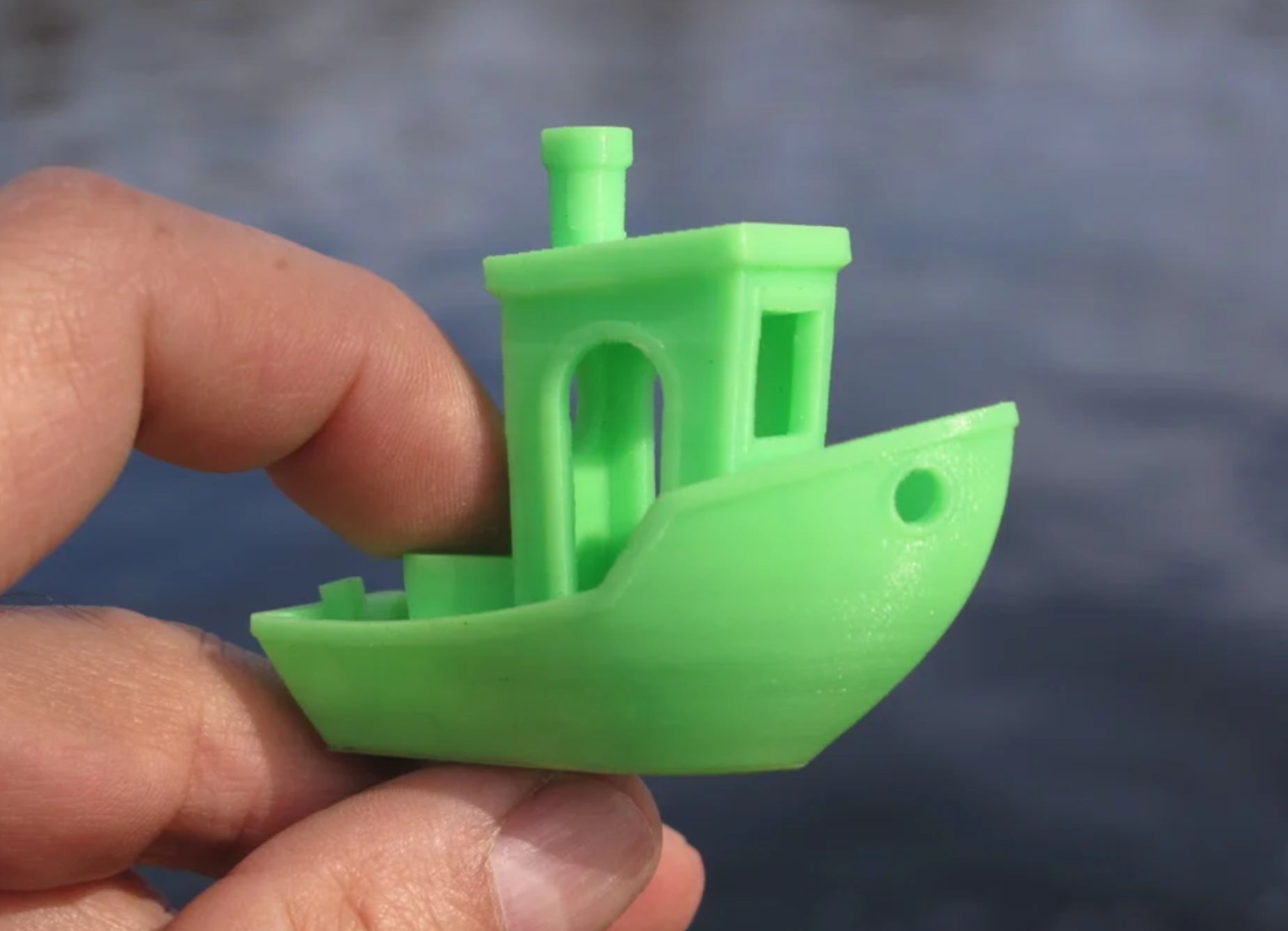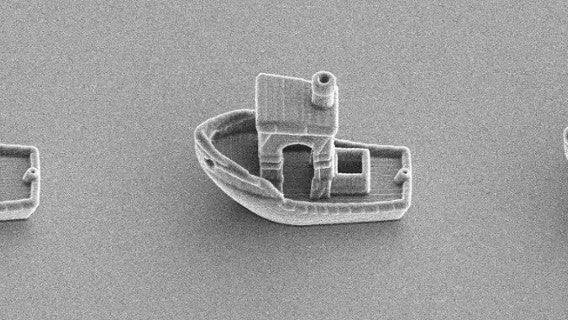Researchers at Leiden University have achieved a remarkable feat in micro-printing: creating the world’s smallest 3D-printed boat. This microscopic vessel, a mere 30 micrometers long, is a replica of “Benchy,” a popular 3D printer test object shaped like a tugboat. To put its size into perspective, this tiny boat could theoretically navigate the interior of a human hair.
 A microscopic 3D-printed Benchy tugboat.
A microscopic 3D-printed Benchy tugboat.
This project goes beyond novelty; it’s part of a broader exploration into the world of microswimmers – microscopic objects or organisms capable of moving through liquids. Nature provides numerous examples of microswimmers, including bacteria and sperm. This miniature Benchy utilizes a small amount of platinum that reacts with hydrogen peroxide to propel itself.
Printing the Microscopic Benchy
One of the most impressive aspects of this achievement is the successful printing of the boat’s cockpit. Creating such an open space at this scale requires sophisticated geometric techniques. The researchers employed a unique printing process.
“A laser is focused inside a droplet, causing localized hardening at the laser’s focal point,” explains researcher Daniela Kraft. “By precisely controlling the laser’s movement within the droplet, we can ‘write’ the desired swimmer shape layer by layer.” This method allows for the creation of intricate structures with internal cavities, like the Benchy’s cockpit.
Why a Tiny Boat?
While the scientific implications are significant, the researchers also acknowledge the fun factor in this project. “3D Benchy is commonly used to test macroscopic 3D printers due to its challenging features,” Kraft states. “It felt natural to explore its printability at the micrometer scale. Plus, creating a swimming micro-boat is simply enjoyable.”
Microswimmers and Future Applications
The development of artificial microswimmers holds immense potential for various applications, including targeted drug delivery, microsurgery, and environmental remediation. This tiny 3D-printed boat demonstrates the growing capabilities of micro-fabrication and paves the way for more complex and functional microswimmers in the future.
The research detailing this remarkable achievement, titled “Catalytically propelled 3D printed colloidal microswimmers,” is published in the journal Soft Matter.











